TOP 10 FILMS
For the most part I try to avoid statements of quality on this site. Not that there’s anything wrong with judging movies, but my reviews are not about likes and dislikes. Their aim is to reveal the thinking behind each film, and you can draw your own conclusions about what’s good or not. Just because a movie expresses a valuable idea elegantly does not mean it isn’t weighted down by some flaw.
This page is an exception. These ten films represent my best effort to rank the most accomplished works of cinema, based on my understanding more than my taste. I don’t believe much in “subjective” or “objective” labels… it’s absurd to think a film’s quality rests solely in the unthinking eye of the viewer, but I can only rely on my own instincts to weigh competing factors against each other, like a film’s core purpose, cinematic properties, storytelling ability, etc. At any rate these are the films I recommend most highly.
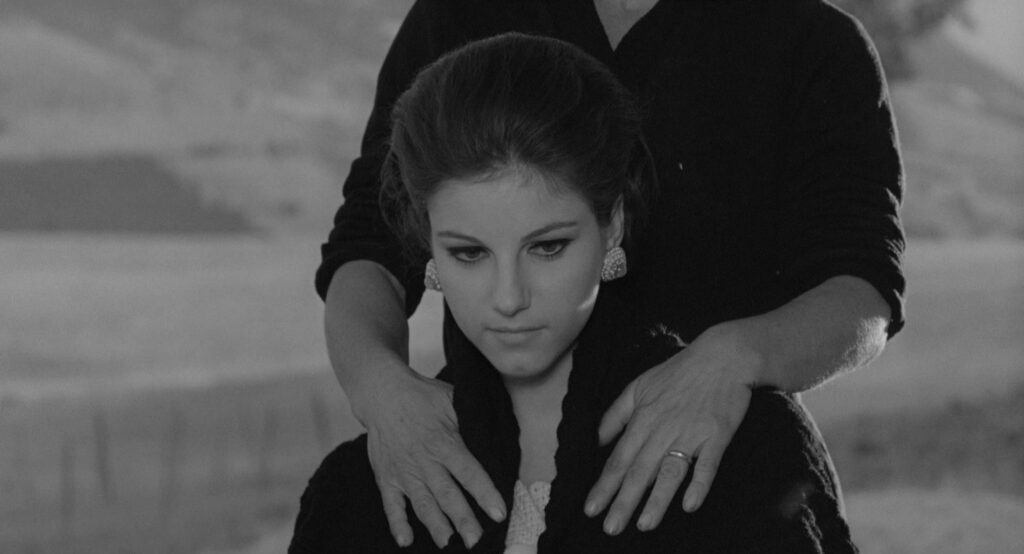
#10. I Knew Her Well (1965, Antonio Pietrangeli)
Twenty-five episodes in the life of an aspiring Italian actress. At first she looks shallow and hedonistic, but as we get to know her a more sensitive personality emerges. The film cuts boldly through her story, taking us from one stage to another with a brio that reflects the excitement of Italy’s booming 1960s.
Most of the films in my Top 10 use their cinematic arsenals to make difficult philosophical arguments. I Knew Her Well makes a relatively simple but necessary argument, i.e. that the humanity in a film is more important than any artistry on display. That’s an easy thing to say, but putting that statement in context requires the movie to do three things: 1) show a living example of great humanity; 2) model the extraordinary artistry that it wishes to put in perspective; and 3) articulate its values in cinematic language. I Knew Her Well succeeds on all three counts. Its protagonist is a modern equivalent of a saint. The movie is an incredible showcase of photography, editing, and acting. And while keeping these virtues as understated as possible, it contrasts them with counterexamples that make its point clear. It depicts a judgmental society that puts Adriana’s saintliness in relief, and there’s a film within the film near the end that puts the movie’s own humanity in relief.
Considering how dazzling the movie’s production and storytelling are, it’s hard to believe it wouldn’t be highly ranked in critics’ polls if it had been widely available before its 2016 blu-ray release on Criterion. Its unheralded existence is an encouraging sign that undiscovered classics could still be lurking in the world’s archives.
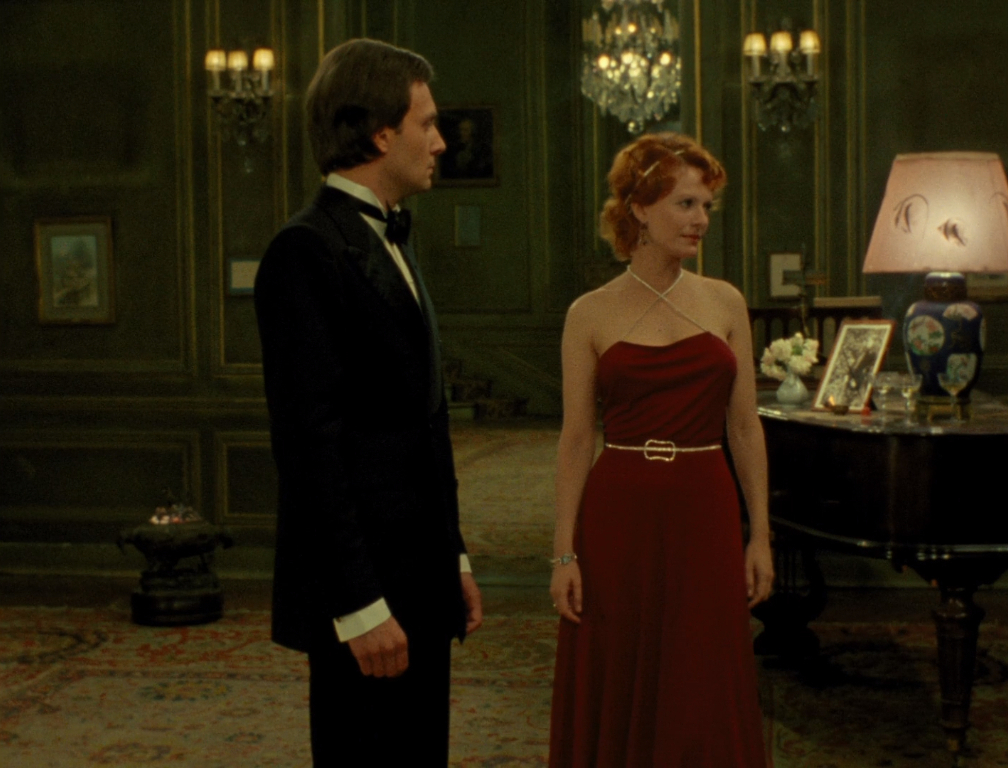
#9. India Song (1975, Marguerite Duras)
In Calcutta in 1937, the French ambassador’s wife passes her time dancing and socializing with various men. Instead of the characters speaking, a few unseen voices from a later time comment on their lives as they drift through the embassy, the garden, and a hotel and guest house on the Ganges delta. The disgraced vice-consul from Lahore pursues the ambassador’s wife, and the air outside is filled with his haunting cries and the singing of a mad beggar woman from Laos.
The languorous pace, seductive music, and extraordinary beauty of India Song are enough to trick even the movie’s admirers into underestimating it, treating it as a purely aesthetic object and neglecting to inquire about its purpose. In fact this movie does what movies do best… it teaches us to see the world with greater appreciation, while potentially saving us from the emptiness of Madame Stretter’s life or the vice-consul’s despair. It’s essentially the same intent behind Antonioni’s films, but Duras does it so differently. She weaves a dense fabric of ambiguities, so that any two characters, scenes, settings, names, or key elements are related to each other through unexpected symmetries or connections. The material of India Song speaks to its times: the demise of colonialism and the dying spirit of modern humans who’ve lost the sense of wonder that connects them to their world. India Song aims to restore that sense of wonder by teaching us to look at things more closely.
Like I Knew Her Well, this hasn’t been widely available in the English speaking world until recently. Many viewers will find it too slow, which is not to say there isn’t a lot going on.
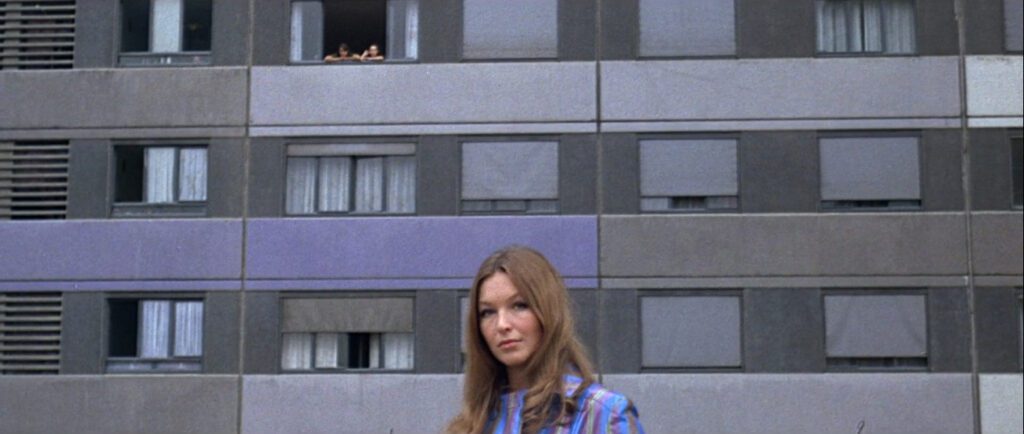
#8. 2 or 3 Things I Know About Her (1967, Jean-Luc Godard)
We’re shown a typical day in the life of Juliette Jeanson, a lower middle-class housewife living in a giant housing complex north of Paris. While out shopping she turns a couple of tricks as a prostitute for extra spending money. The movie does not treat her with pity, nor does it sensationalize or eroticize her life… in fact we see nothing much out of the ordinary except for Juliette and her friend parading before a client with luggage bags over their heads. Even the humor in this is muted, uncharacteristically for Godard. There’s almost nothing here to make anyone wish to see the film, but brave viewers willing to plunge into the movie’s enigmas may discover the same sense of wonder that Juliette finds during one brief moment of her repetitive life.
It’s not easy to define the summit of Godard’s career, but this is my pick. Alphaville‘s cinematic imagination and clear philosophical insight could have easily placed it in the top ten, but Godard’s wish to avoid the apearance of high art gave that film a comic book premise about a middle-aged man rescuing a pretty young woman from a villainous supercomputer. That doesn’t negate the importance of Alphaville, but it gives an edge to this perplexing but more believable movie. Once we notice that both films are set in cities of the future, we can understand how 2 or 3 Things I Know About Her extends the thinking in Alphaville and situates it in the real world.
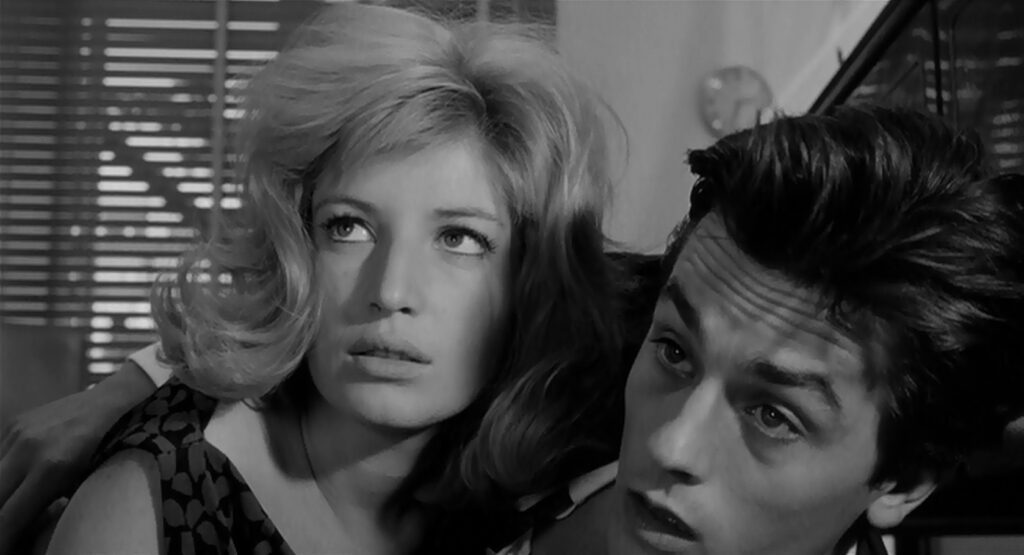
#7. L’eclisse (1962, Michelangelo Antonioni)
After breaking up with her lover, Vittoria starts an affair with Piero, her mother’s stockbroker. Much of the movie is set in Rome’s chic new EUR district, and the modernist music score complements the mid-century architecture and sculptures. Few characters in cinema are as paradoxical as Vittoria, played by Monica Vitti with an effortless blend of whimsy and seriousness.
L’eclisse is probably not Antonioni’s greatest film, but it’s surely the best distillation of his thinking. Critics never get tired of calling Antonioni an observer of alienation or boredom in the modern world, but that hardly captures his ambition, which is to teach us to escape that malaise by training our vision. In the opening scene Vittoria plays with an empty picture frame; she’ll spend the movie trying on different points of view, but in the end it’s the viewer who should learn to transcend a unitary viewpoint. If you detached the last seven minutes from L’eclisse, most people would take it for an experimental film, but in fact the whole movie prepares us to watch this ending with an intensity that approaches a state of wonder. If we can learn to see our own world that way – not a dramatic or idealized world, but the ordinary world as it actually is – it will change our lives for the better.
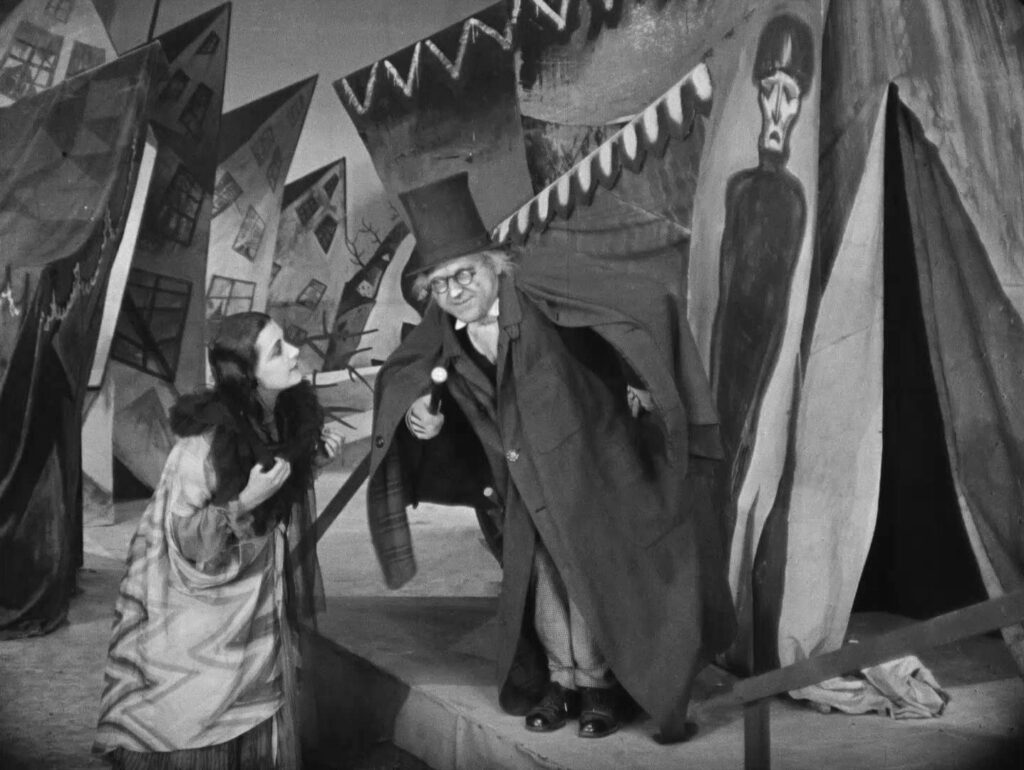
#6. The Cabinet of Dr. Caligari (1920, Robert Wiene)
A young man recounts a convoluted tale of murder, kidnapping, jilted love, and a mysterious somnambulist in his hometown. The film is set in a strange wonderland of Expressionist architecture with crooked houses, jagged windows, and imposing shadows. The story is full of twists, with something important happening almost every minute.
It seems incredible that this movie was made so early with so little precedent. Without the benefit of sound, and without any comparable predecessors to inspire its ambition, it gives us a journey into the human mind, with insight into the ways ordinary people deceive themselves. The framing story, the unreliable narrator, the layers of ambiguity, the way the settings reflect the inner story – all of these are advanced tools of cinematic storytelling. The Cabinet of Dr. Caligari unites these techniques with a logic so tight that one wonders who’s responsible – or was it a team effort like the best early Hollywood films? The writers weren’t happy with the added framing story, but the movie is better for it.
The Cabinet of Dr. Caligari is well enough known, but critics have rarely taken it as seriously as they should. It might be tempting to look at it as a stylistic oddity, or to approach it as a genre film, but that doesn’t do justice to its psychological insight or its intricate construction. The movie’s enduring influence speaks highly for it though. For several years, up through Metropolis in 1926, German filmmakers kept trying to recapture its effect, and its style and storytelling shaped Hollywood pictures (e.g. film noir) for decades.
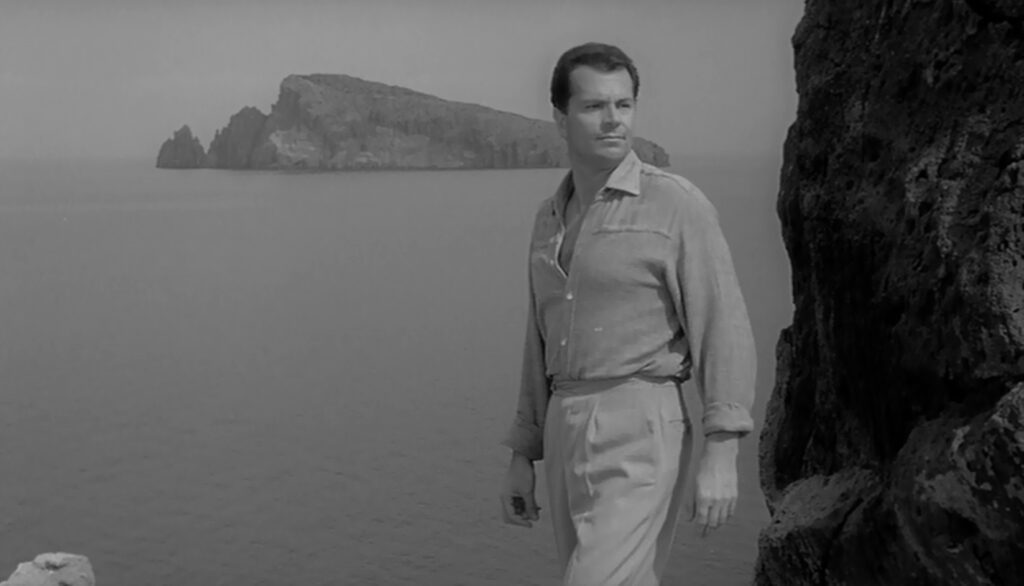
#5. L’avventura (1960, Michelangelo Antonioni)
During a boating expedition in the Aeolian Islands, a woman disappears from the island of Lisca Bianca. Her fiancé Sandro and her friend Claudia try to track her down, following increasingly dubious leads as they travel through Sicily. The slow pace, the setting, the music score, and the characters’ names all evoke something of the ancient world amid the modern upper-class milieu.
The word “revolutionary” gets thrown around a lot, but in the history of movies probably only this and The Cabinet of Dr. Caligari merit the description. Those two films both created a new language of cinema and exerted a lasting influence on succeeding movies. What’s so revolutionary about L’avventura however is not only its distension of time and its open ending, which so many people rightly comment on. It also systematically mutes the drama, quickly allowing reality to intervene whenever a situation threatens to turn dramatic. A shark attack, for example, turns out to be a joke, but only two characters know that… it’s not played for comedy or suspense. A movie without dramatics puts an enormous trust in the viewer, who has to find new reasons to take interest in what’s happening. The result, if the viewer is willing, is a sense of wonder even in the ordinary material of life.
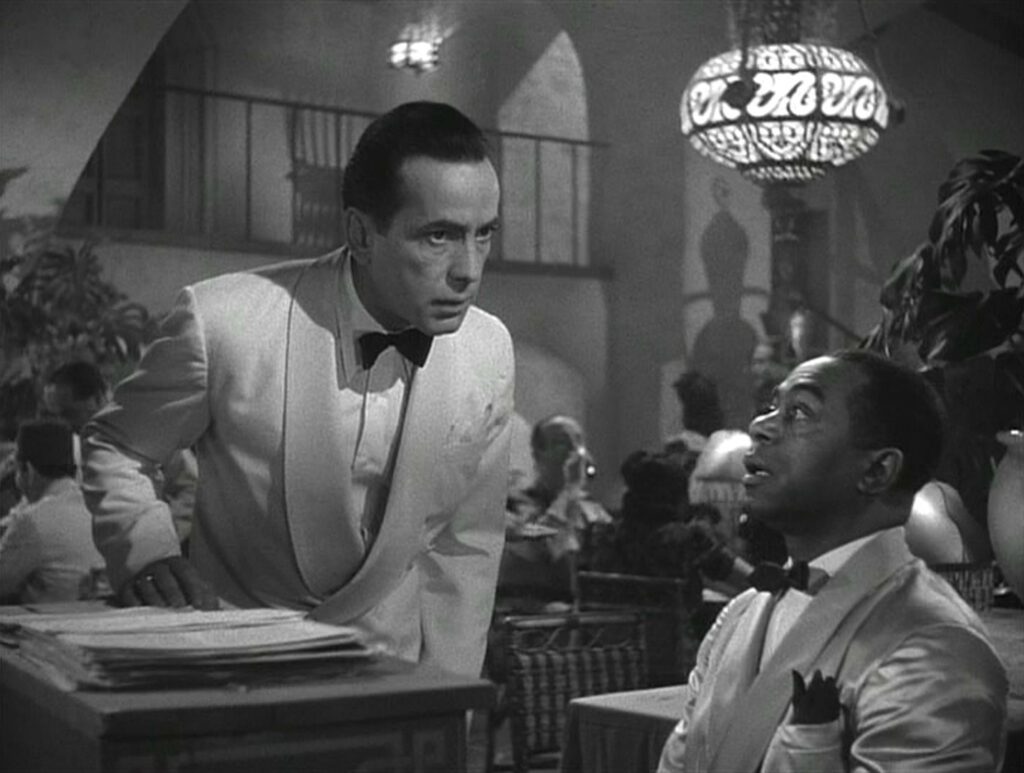
#4. Casablanca (1942, Michael Curtiz)
Early in World War II Rick Blaine is running a nightclub in Casablanca when his ex-lover Ilsa Lund happens to walk in with her husband, a hero of the Czech resistance. The reunion jolts Rick out of his self-pity and brings out the best in a few morally ambiguous characters. The unfolding drama does two things: it mirrors the geopolitical situation of the United States in 1942, and it encapsulates a philosophy of life that contrasts two visions of time. Allusions to time recur throughout Casablanca, but the subject is woven in so naturally that it never feels abstract. Instead the movie suggests that the object of life is not happiness, but rather the experience of a kind of eternal time that gives us something to live for, even after it has passed.
Casablanca also represents a kind of filmmaking that gets neglected when critics place too much emphasis on auteurs. The studio system of Hollywood’s Golden Age relied on collaborative effort rather than the vision of an “artist-hero”, and it produced many great films whose positive social influence was probably greater than anything made since the 1950s.
Few movies rival the ensemble of acting performances in Casablanca (maybe All About Eve or Les parents terribles). The script is also top-drawer, with many quotable lines that are still widely recognized. The Marseillaise scene stands out for its rousing emotional crescendo, and the movie is a triumph of set design.
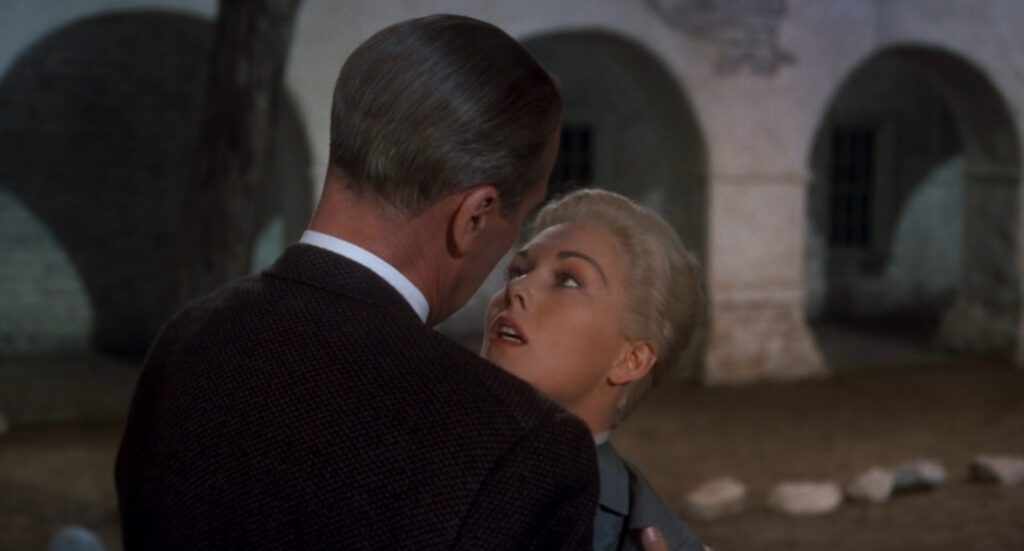
#3. Vertigo (1958, Alfred Hitchcock)
A college friend hires ex-cop John “Scottie” Ferguson to follow his wife, who he says is obsessed with the spirit of her long-dead great-grandmother. Scottie is reluctant at first, but the moment he sees the woman he’s hooked. His attraction is intense but clearly unhealthy, and once we figure out his real motivation the movie becomes a defining study of a psychological flaw with enormous social impact.
Most viewers sense the deep currents of emotion in Vertigo, but to say where they come from is something else. Critics already rate this as one of the greatest films, but few appreciate how thorough Hitchcock was. It’s not enough to say it’s about “obsession” without defining the object of that obsession. The movie makes a damning argument that should change the way people look at human behavior. Its point may be challenging to see, but it’s not obscure… Hitchcock hints at it in every scene, and almost everything has a double meaning.
Hitchcock spent at least twenty years leading up to Vertigo. From The Lady Vanishes to Strangers on a Train to Rear Window, the movie’s subject rises to the foreground then hides again, the way it’s hidden in real life. In Vertigo it’s hidden more than ever, making the film like a coiled rattlesnake ready to spring its revelation.
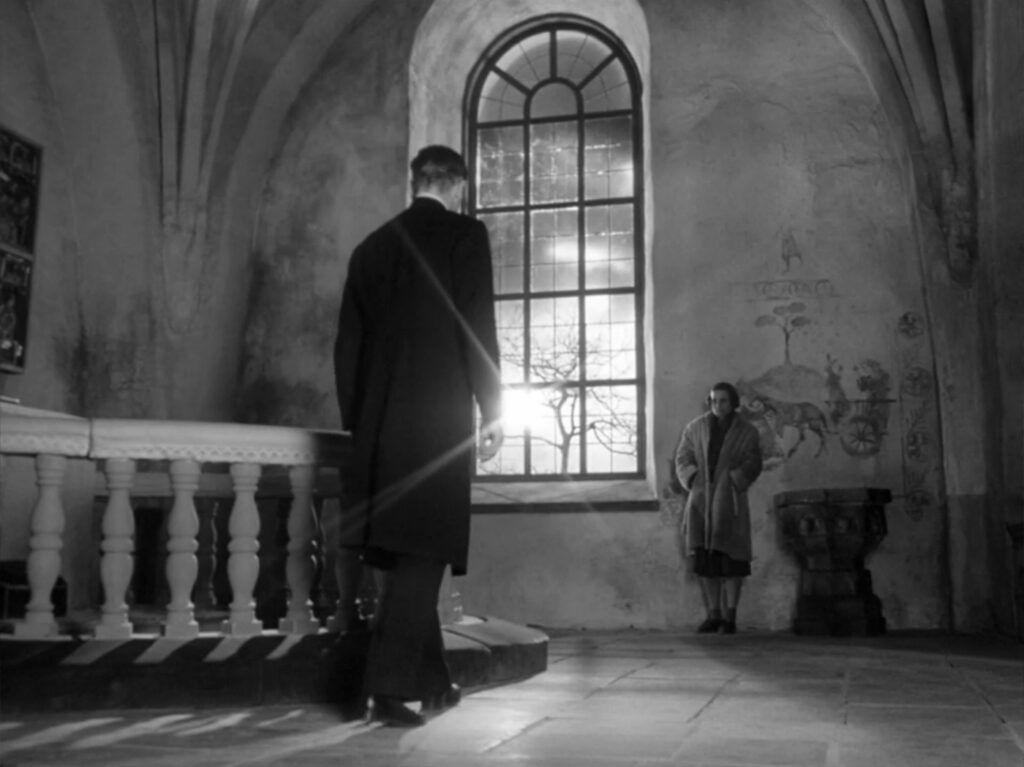
#2. Winter Light (1963, Ingmar Bergman)
Winter Light traces four hours in the life of a Lutheran pastor in rural Sweden. After he fails to reach a desperate parishioner, his partner Märta almost miraculously guides him out of despair, simultaneously showing him and us a different way to look at life, and pinpointing the greatest flaw in traditional Christianity.
Like Vertigo this makes an absolutely thorough argument that’s elegantly ingrained into the story, which even surpasses Vertigo because it’s more lifelike and so seemingly simple. Various symmetries and structural devices reinforce the point without ever distracting the audience; in fact most of them don’t become apparent until the end. The last scene is a candidate for the most emotionally affecting ending ever filmed, but only if you follow what the film is doing. It does nothing to force the emotion… it comes rather as an epiphany.
Ingmar Bergman’s more popular masterpiece Persona is more outwardly dazzling, and it may be more ambitious than Winter Light, but this one works better. There’s one arty scene where Märta reads a letter into the camera, but it doesn’t detract from the movie’s strange force. One bit of interesting trivia: the actor who plays the organist is Greta Thunberg’s grandfather.
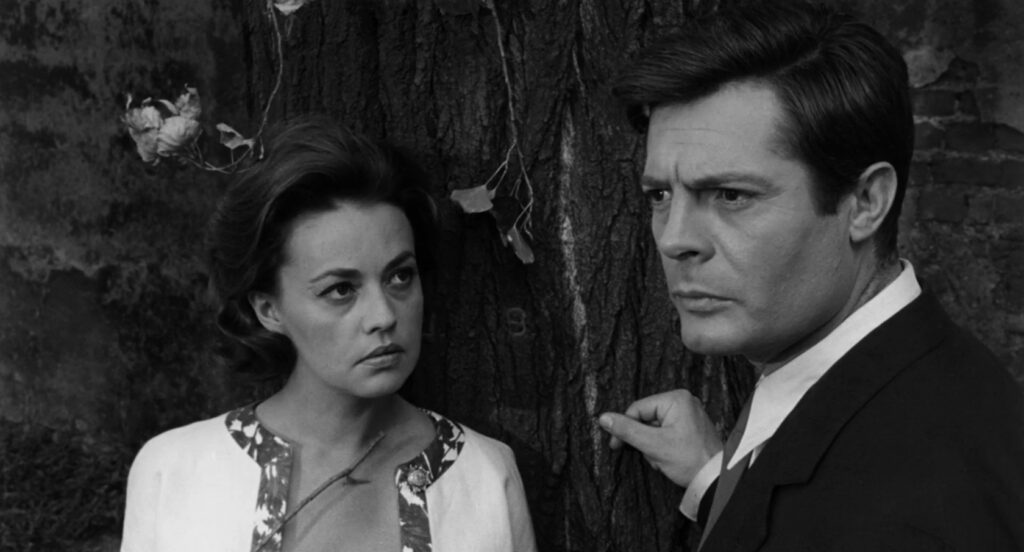
#1. La notte (1961, Michelangelo Antonioni)
In a span of roughly seventeen hours, a married couple in Milan visit a friend in the hospital, attend a signing party for the husband’s book, go their separate ways for a while, meet in the suburbs, visit a nightclub, and go to a party at an industrialist’s mansion. There’s very little plot or drama, and the film moves from one incident to another like real life… which is not to say that the events are random. On the contrary, they add up to a complete vision of life that’s expressed in a glass of wine drunk upside-down and in the sounds of trees when you press your ear to the trunk.
What’s so extraordinary about La notte is that it’s possible to see it so many different ways. On one viewing you might take sides with the wife, on another with the husband. You can watch it as a small story about a single day and night, or as a keyhole into whole lives and the way we experience time. You can view it as a modern painting come to life, or as a long and highly choreographed dance. You can view two characters as versions of the same person, or one character as a stand-in for the viewer, and on and on. The film is marvelously ambiguous, but not in an arty or artificial way. If you’re willing to take it seriously, it gets bigger and more enjoyable with successive viewings.
It’s not hard to imagine why people underestimate this film. It does almost nothing to seduce the viewer (although it does have its sensual delights, including the gorgeous music at the nightclub and some striking shots). To appreciate this you have to want to see it. Still, the usual critical lines about Antonioni’s disaffected characters don’t come close to describing La notte with any justice. Antonioni’s films always aim to sharpen our vision, which is synonymous with teaching us to find the wonder in everyday life, incidents, objects, and landscapes. People often go to science fiction films to find wonder, but there’s more to be had in this seemingly modest but intricately constructed and philosophical movie.